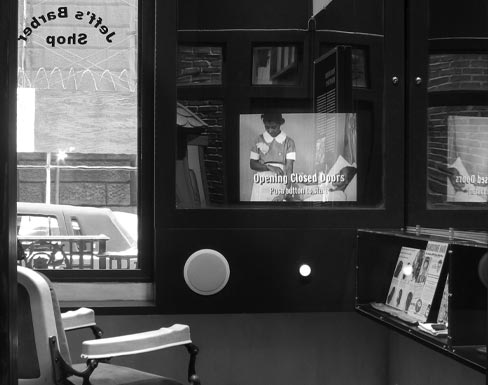Exhibit Review
Brooklyn Works: 400 Years of Making a Living in Brooklyn
Brooklyn Historical Society, Brooklyn, NY. Curator: Ann Meyerson
Semipermanent
Visitors to New York City frequently overlook one of the region's most interesting communities, the borough of Brooklyn. From its agricultural beginnings to its commercial heyday, Brooklyn's history is unique. The Brooklyn Historical Society's exhibit, Brooklyn Works: 400 years of Making a Living in Brooklyn, follows this history through the lens of the borough's ever-changing industries and workers. Theatrical backdrops, large format photography, audio presentations, artifacts, and hands-on exercises combine to give life to each era in Brooklyn's labor history.
The exhibit was developed over five years with help from a National Endowment for the Humanities grant. The far-reaching exhibit marks the reopening of the Brooklyn Historical Society after an extensive renovation of its historic home. Curator Ann Meyerson and the society's staff compiled artifacts from industries and the society's collection.
An opening video montage sets the theme by focusing on the people of Brooklyn, depicting their work, their diversity, and their vibrancy. The exhibit is divided in four sections, each chronicling a distinct wave of immigration and corresponding trends in labor. The exhibit immerses the visitor in each era, using stage sets that recreate the architecture, artifacts, and vistas of the time. A combination of well-written text, interactive activities, audio and video recordings, and photographs make this exhibit accessible and engaging for a variety of age groups. Bounty and Bondage: King's County before 1820 depicts the region's agricultural heritage through narrations recreated from letters, diaries, and artifacts from the era.
The World Trades with Brooklyn: 1820-1880 documents the city's emerging role as a major shipping center in the 19th century. The completion of the Erie Canal transformed the Port of New York into one of the busiest in the world. By 1880, Brooklyn was the nation's third largest city. (Brooklyn was incorporated as a borough of New York City in 1898.) In one gallery, a map of the Brooklyn docks is paired with questionnaires and primary source documents, challenging visitors to take on the role of trade-goods inspector.
The apex of Brooklyn's industrial might is addressed in Brooklyn: A Powerhouse of Production 1880-1950, which examines the period through the voices and artifacts of laborers. In one gallery, a barbershop becomes a peaceful place to view period photographs while listening to oral histories of African Americans' finding work and facing discrimination. Nearby, a gallery with steel plates, overhead catwalks, and industrial sounds, recreates the Dickensian world of a sugar refinery. A Domino Sugar Company movie from 1920 is paired with commentary on the quality of life for workers in the factory including descriptions of oppressive heat, occasional explosions, and poor air quality. A touch-screen computer lets visitors try "making ends meet" on the salaries of waiters or longshoremen. The role of women is included, documenting long hours in garment factories with little pay and hazardous working conditions. After marriage, their daily work included keeping their homes, raising their children, and taking in piecework for extra money.
A note of sadness underlies the last section of the exhibit, Industry Shifts Gear, Brooklyn Today: 1950-2000. A combination of factors shifted Brooklyn's labor market from an industrial to a service economy. The developing highway system reduced the need for nearby industry, product processing, and shipping facilities; governmental incentives lured businesses into the suburbs; and little room in inner cities was available for expansion. The borough's growth halted and then receded, and job losses mounted. The end of the era is punctuated by the departure of the Brooklyn Dodgers.
Large demographic maps depict the ever-changing population of the borough. A full gallery is devoted to profiling the diversity of its workers ending the exhibit on a high note, leaving visitors with a sense of Brooklyn as a vital and thriving cultural center. Although the fruit of Brooklyn's labor, from rope to cotton to sugar, are well documented, the real story is the ebb and flow of people. A century ago, Brooklyn's population was surging with waves of immigration from Europe. Today, the percentage of foreign-born residents in Brooklyn is again about 40 percent, but the new immigrants hail from Asia, Africa, the West Indies, Central America, and Eastern Europe. Brooklyn Works provides preservationists a look at an area's ever-evolving industrial and ethnic heritage and how such diversity manifests itself over time.
Claire Kelly
New York, New York

